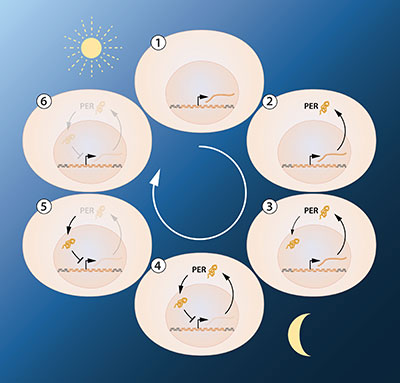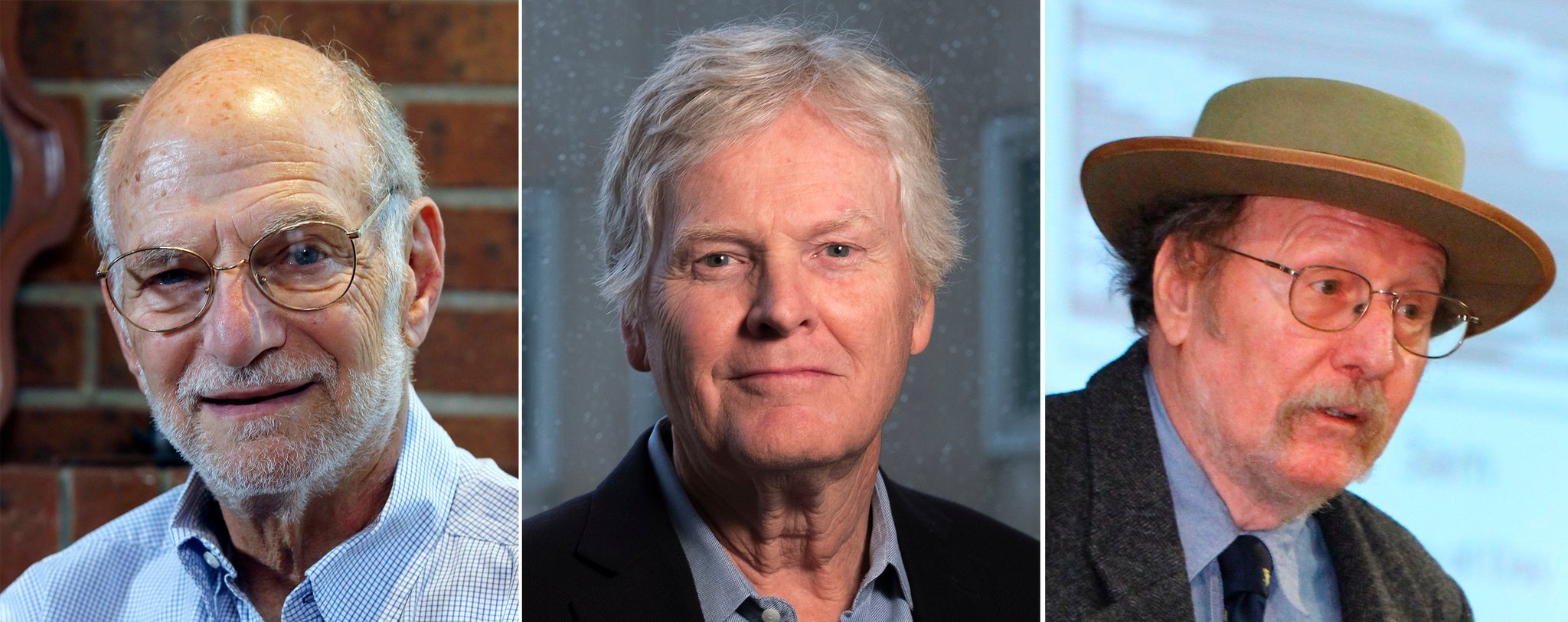Nobel Prize in Physiology and Medicine 2017: the molecular mechanism of the biological clock

On October 2, 2017, the Nobel Committee announced the names of winners of the 2017 Nobel Prize in Physiology and Medicine. 9 million SEK will be shared equally by American biologists Jeffrey C. Hall, Michael Rosbash and Michael W. Young for their discovery of the molecular mechanism of biological clocks, that is, the endlessly cycled circadian rhythm of vital activity of organisms, including human.
For millions of years, life has adapted to the rotation of the planet. It has long been known that we have an internal biological clock that anticipates and adapts to the time of day. In the evening I want to sleep, and in the morning I wake up. Hormones are released into the blood strictly on schedule, and human abilities / behavior - coordination, reaction speed - also depend on the time of day. But how does this internal clock work?
The discovery of biological clocks is attributed to the French astronomer Jean-Jacques de Meran, who in the 18th century noticed that the leaves of mimosa open to the Sun during the day and close at night. He wondered how the plant would behave if placed in utter darkness. It turned out that even in the dark the mimosa was following the plan - it was as if she had an internal clock.

Later such biorhythms were found in other plants, animals and humans. Virtually all living organisms on the planet react to the Sun: the circadian rhythm is firmly embedded in earth life, in the metabolism of all life on the planet. But how this mechanism works remains a mystery.
Nobel laureates isolated the gene that controls the daily biological rhythm in fruit flies (humans and flies have many common genes due to the presence of common ancestors). They made their first discovery in 1984. Open gene called period .
The gene period encodes PER protein, which accumulates in cells at night and collapses during the day. PER protein concentration varies on a 24-hour schedule in accordance with the circadian rhythm.

Then they identified additional protein components and fully revealed the self-sufficient intracellular mechanism of the circadian rhythm - in this unique reaction, the PER protein blocks the activity of the gene period , that is, PER blocks the synthesis of itself, but gradually collapses during the day (see diagram above). This is a self-contained infinitely looped mechanism. It works on the same principle in other multicellular organisms.
After the discovery of the gene, the corresponding protein and the overall mechanism of the internal clock operation, several more pieces of the puzzle were missing. Scientists knew that PER protein accumulates at night in the cell nucleus. They also knew that the corresponding mRNA was produced in the cytoplasm. It was not clear how the protein enters from the cytoplasm into the cell nucleus. In 1994, Michael Young discovered another timeless gene that encodes the TIM protein, which is also necessary for the normal operation of the internal clock. He proved that if TIM joins PER, then a pair of proteins can invade the cell nucleus, where they block the activity of the gene period , thus closing the endless cycle of production of the PER protein.

It turned out that this mechanism adapts our internal clock to the time of day with exquisite precision. It regulates various critical body functions, including human behavior, hormone levels, sleep, body temperature, and metabolism. A person feels bad if there is a temporary discrepancy between external conditions and his internal biological clock, for example, when traveling long distances to different time zones. There is also evidence that the chronic disparity of lifestyle and internal hours is associated with an increased risk of various diseases, including diabetes, obesity, cancer and cardiovascular diseases.
Later, Michael Young identified another doubletime gene encoding the DBT protein, which slows down the accumulation of PER protein in the cell and allows the body to more accurately adapt to the 24-hour day.
In subsequent years, the current Nobel laureates highlighted in more detail the participation in the circadian rhythm of other molecular components, they found additional proteins that are involved in the activation of the gene period , and also figured out the mechanisms of how light helps synchronize the biological clock with external environmental conditions.

From left to right: Michael Rozbash, Michael Young, Jeffrey Hall
The study of the mechanism of the internal clock is far from complete. We know only the main parts of the mechanism. Circadian biology - the study of the internal clock and the circadian rhythm - emerged as a separate rapidly developing field of research. And all this happened thanks to the three current Nobel laureates.
Experts have been discussing for several years that the Nobel Prize will be awarded for the molecular mechanism of circadian rhythms - and this event has finally happened.
All Articles